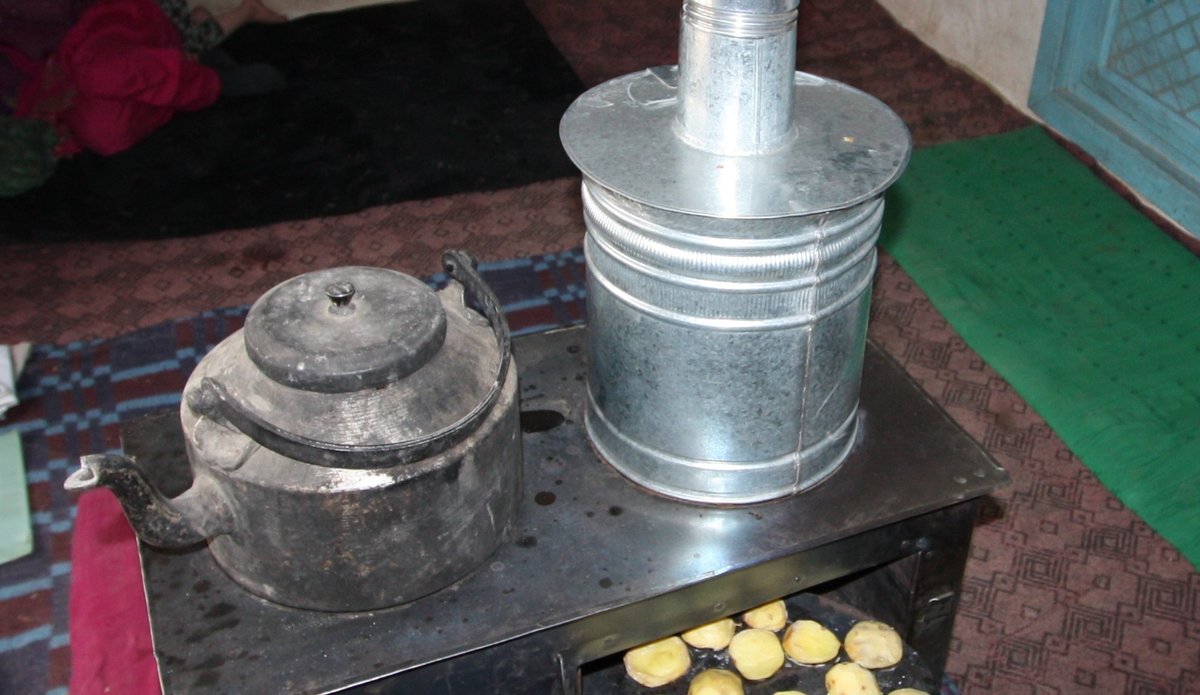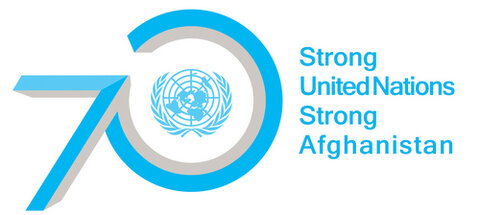Community unites around effort to find a more efficient ‘clean stove’
BAMYAN - A community-led project in Bamyan could improve indoor air quality for thousands of families; give rural women jobs; reduce rangeland and forest degradation; and help communities adapt to global climate change
During cold winter months many Afghan families huddle indoors where they draw warmth from their tandoor , the drum-shaped oven that sits buried in the ground in the middle of homes. These ovens keep homes hot and are used to prepare meals but because they have no chimneys they also pose significant health risks. Keeping those fires alight also requires burning large quantities of scarce resources like rangeland, shrubs or expensive options such as coal.
A collection of international organizations have set out to create a different kind of oven for traditional Afghan homes. The work is being undertaken at a green design lab in Bamyan where local metal-smiths, engineers and environmental experts are at work on a new kind of stove technology to help Afghan families. Three clean stove prototypes have been created: a tandoor, a bhukari and a solar heater.
Getting the design right could potentially save lives and lessen dependence on fuel sources. More than 95 per cent of the country’s estimated 30 million people burn wood and other solid fuels in their homes, making Afghanistan one of the top 10 countries worst affected by indoor pollution, according to the UN World Health Organization (WHO). Indeed, according to a recent study by the WHO, inhaling smoke from indoor heating and cooking kills about 54,000 Afghans per year. Regularly breathing smoke also leads to childhood pneumonia, lung cancer and other cardiovascular diseases. Most of those killed are children under the age of five. Women who spend most of their time inside their homes are also frequent victims.
“People don’t understand how bad the smoke is for their health. Many people have bronchitis and as they get older develop chronic chest and lung diseases,” said Dr. Mirajan Dadras, a doctor in Bamyan.
The destruction is as deadly to the environment as it is to the human body. Cooking stoves contribute to greenhouse gas emissions and deforestation. At the current rate of deforestation, the UN Environment Programme (UNEP) reported that all Afghan forests will disappear within 30 years.
Based on findings from surveys carried out in and around Bamyan, so far the design team has developed three clean stove prototypes. The ideal design should have several qualities. It needs to cook potatoes and bake bread without creating indoor smoke. It also needs to heat rooms. Finally, since many families subside on less than a dollar per day, cost is a key factor. Materials have to be available locally and the fuel has to be sustainable and easily available, particularly when heavy snows isolate rural communities from centres of commerce.
“These are new ideas, even for us. We have never built like this before,” said Kareem, a blacksmith involved in the project.
The project is financially underwritten by the government of Finland and technical guidance is being carried out by UNEP and My Afghan Mountains, a domestic non-governmental organization (NGO). The work has an added significance in that 2012 is the UN International Year of Sustainable Energy for All.
“UNEP is linking Afghan environment law and policy to practical action on the ground. We partner with a range of government, civil society and other UN organisation such as WFP (World Food Programme), FAO (Food and Agricultural Organization) and UNAMA,” said Andrew Scanlon, Country Programme Manager at UNEP.
Still, the design of the stove is a joint local effort that draws on advice from diverse members of the community. Numerous prototypes have been tested inside homes.
“Early prototypes were overly complicated. There is no perfect stove but our triple bottom line was to come up with a simple design that allows Afghans to conserve fuel in the summer, heat their home in the winter and still be economically viable,” said Eoin Flinn, a project manager with My Afghan Mountains.
It is anticipated that the successful designs could have positive economic consequences for many women. If the new clay design catches on, building and maintaining stoves could provide employment opportunities for women throughout the country.
The design team had a breakthrough moment this February. An Afghan blacksmith had a suggestion: Why not place the stove parallel to the kitchen by sinking a space where the cook could stand. This would allow smoke to curl through vents connected to the side of the house. Women would no longer be burned while cooking. More experiments are being carried out in homes. Like many things in Afghanistan the process of trial and error can yield positive outcomes, especially when Afghans themselves are at the helm.
By UNAMA
For more information about this and other UNEP projects in Afghanistan, go to the UNEP website
Learn more about the Global Alliance for Clean Cookstoves, an initiative led by the UN Foundation
Meet the Bamyan team at the Conservation Organization of Afghan Mountains, go to www.myafghanmountains.org
 UN
UN







